Getting Hooked on Ham Radio
For Christmas one year, at age 10, I think, Santa brought me a Radio Shack 100-in-1 electronics project kit. A variety of parts were mounted on a cardboard backing and interconnections were made per a manual by connecting wires between the spring-like terminals adjacent to each part. That kit opened the door to all the "cool" things that electronics offered. I remember one night setting up a siren from the kit and hooking it to a photo-cell switch. When my door was opened, it broke the light beam and activated the siren bringing quite a surprise to my mom. 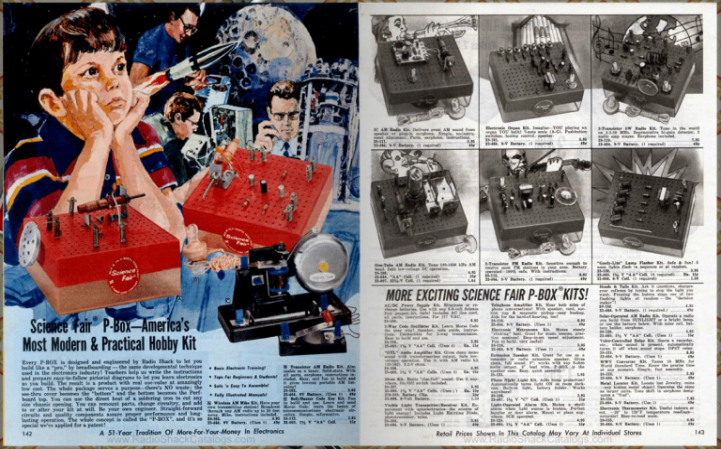

The interest in electronics continued to grow and at age 11, as part of a Boy Scouts merit badge project on electronics, I had attempted to build a small few-transistor shortwave radio sold by Radio Shack. For some reason, I could not make it work properly. My dad had a friend who lived next door to a ham radio operator and suggested he may be able to help figure out the problem. A few days later, I was in the basement located radio shack of Bill Turney, then WA0RFF. Bill ultimately helped track down a transistor which was incorrectly oriented bringing function to the Radio Shack kit. But that visit also introduced me to the world of ham radio... 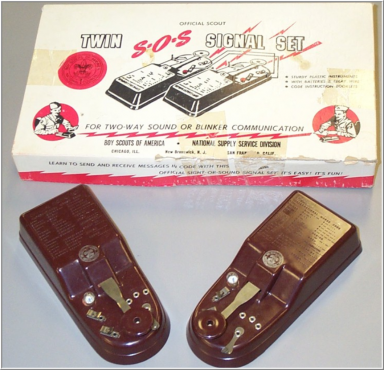
Bill's shack at the time was home to a 75A4 Collins receiver, Hallicrafters HT-32 and a home brew amp. Big Iron!!! Looking back, I think it was the glow of that 3-400z filament that really "hooked" me on radio. It was magic. The amp backed by that suite of classic boat anchor gear made a strong impression in a young mans mind. Soon after, other hobbies - including Boy Scouts - would fall to a pursuit of my Novice ticket. I learned Morse code indirectly from the Boy Scouts as well, purchasing a set of buzzer code key. And energized with the visit to Bill's shack, somehow managed to memorize the dot-dash sequence of the alphabet and numbers one morning before school. Ah, the benefits of youth!!! 
I found Bill Turney in 2008, now W4SY, living near Wichita and learned he still had that old amp. A couple of photos of the amp are shown below. The case is from the Hallicrafters HT-32 that Bill eventually sold to me. 
Bill describes the amp this way... "There are two identical transformers in it with primaries in parallel and secondaries in series. This to a full wave bridge to supply about 3200v to plates of 3-400z. No input tuning as I built it in days of tubes and pi-nets. Yes, the oil filled is only 4 uF...not much but never detected any hum or rasp on cw note. The round black face meters are from an ART-13 as is the B&W plate choke. The smaller transformer is the filament. I would a bi-fillar choke on a 7 inch ferrite rod. The tank is just a collection of stuff. It is heavy and dangerous as no interlocks. I do think I hung a RF choke across the output connector to blow a fuse should the plate blocker short. I remember it putting out about 800 watts...." Bill later administered my Novice exam and 5 WPM code test. A few weeks later, I had become WN0QPC. Shack History - 1974-1981 1974 - 6L6 single tube 10w transmitter and Hallicrafters S20R receiver 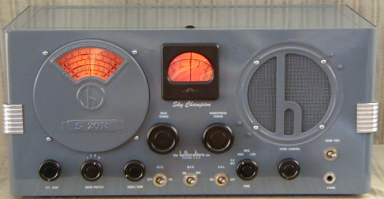 With no money, putting a ham shack together involves the goodwill of others. Fortunately John Saylor, USSN Signalman, had an attic full of goodies just right for the junior ham on a zero dollar budget. Most of the stuff he had was from pre-WWII era like this 1939 Hallicrafters S20R receiver (left). But for the most part, it was home-brew from the 30's or military WWII vintage stuff. A few boxes I could identify as having a purpose (like this VFO to the right) but I was too junior in my radio understanding to know what some of the stuff was. In retrospect, I really wish I had taken a few more pictures of that stuff - it was quite a sight which is difficult to explain well in words. With no money, putting a ham shack together involves the goodwill of others. Fortunately John Saylor, USSN Signalman, had an attic full of goodies just right for the junior ham on a zero dollar budget. Most of the stuff he had was from pre-WWII era like this 1939 Hallicrafters S20R receiver (left). But for the most part, it was home-brew from the 30's or military WWII vintage stuff. A few boxes I could identify as having a purpose (like this VFO to the right) but I was too junior in my radio understanding to know what some of the stuff was. In retrospect, I really wish I had taken a few more pictures of that stuff - it was quite a sight which is difficult to explain well in words.
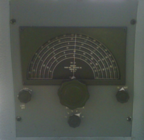
I don't remember the S20R receiver working very well and had nothing in the way of actual selectivity. To fix that issue, my first construction project was a tube-powered AF filter using 88 uH telco coils. Lot of ringing, as I recall, but it did the job! The transmitter had no filtering and was essentially a high-powered oscillator. I had a couple of crystals, unfortunately they were all at the edge of the novice allocation on 80m. So Qs were few and far between. The antenna at that time was a single 80m dipole at an amazing 13' (4m) apex, with ends about 5' (2m) from the ground. It paralleled a house and fence along the full length. The band conditions MUST have been very good then because I used the dipole in that location for a long time although it took a better transmitter... 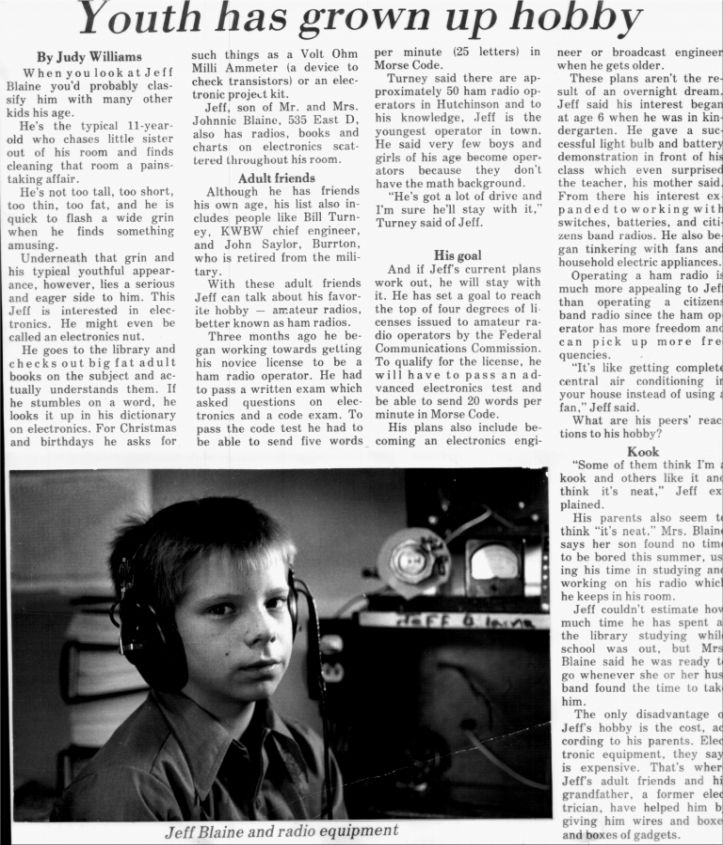
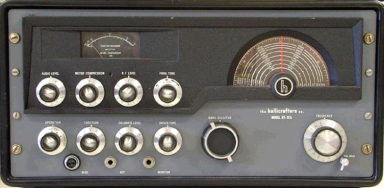
1976 - Hallicrafters HT-32 with VFO - but still without a good RX...My first Elmer Bill Turney sold me this overhauled HT-32 for $100. He had a HT-32 as his primary transmitter along with a classic 75S Collins and a home-brew 3-500z amp. The clam shell case from my HT-32 provided the matching case for his lineup and my HT-32 had a very heavy single case, as I recall. It was wonderful as a transmitter because it provided frequency coverage on all 5 bands, complete with a much needed VFO. A pair of 6146b for output power. 85 lbs of boat anchor joy... The navy mod military receiver vintage WWII Stromburg Carlson RBS-2 (or maybe RBM-5) general coverage unit with a floor mounted power supply. The receiver was better than the S20R. 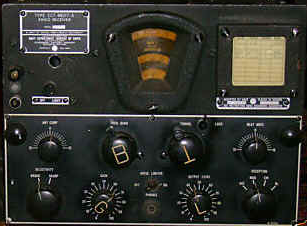
Antennas then included a modified Hi-Gain Hi-Tower salvaged from a storm which brought down the free-standing unit. The price was right (pickup for free). It was mounted at the end of the house, and bolted to the apex. My dad wanted to make sure it did not blow down again - which it never did. Radials ran out for about 6 feet on 2 sides. I did not understand the proper use of the decoupling stubs and it seemed the antenna never tuned properly (bolted to the side of the house, I can now only imagine what the complications were...) and so I used a variety of home-brew antenna tuners. 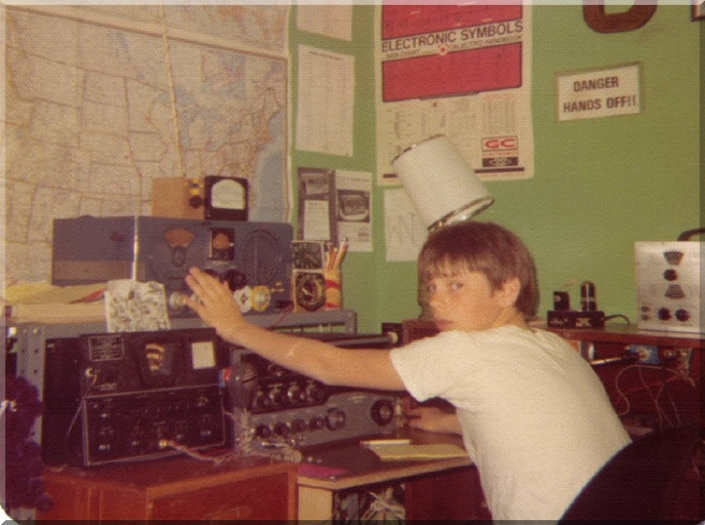
1976 - Added Hammurland SP-600! Picked up Extra Class later that year Around this time my antenna knowledge was growing. And so were the adventures in antennas. I had full-sized 20m verticals in the side yard with a proper spread of radials. No choke coils in existence then. And the coax was about 150' of RG58. Must have had about 5w ERP. A second riser had been built out of a long 25' (6m) long 2" pipe mounted in a hole on the side yard. A crows-nets of aluminum provided a total end height of about 40' (13m). The center whip of the Hi-Tower had been replaced by a 20' aluminum I-beam (worth a fortune in 2010!) was given to me by a relative and bolted to the top of the tower. Net height about 45' and it was very strong. Ropes off of each end offset the tension of the dipole strung between the two supports. The antenna was a dipole with home-brew 3" spreader open wire feeders made of about 18-Gage wire of some kind. The open wire spreaders were heavy ceramic units and the unsupported weight in the center was considerable. The open wire ran into the garage where a remote-tuned antenna tuner was mounted on a big block of scrap plywood. Scrap motors (including a 1/2 HP washing machine motor) and drive reduction gears were attached to each of the 3 components and #12 wire was run to a set of switches in the shack. It covered all bands.In retrospect, it's a wonder I did not have wire shorts given the size of the motors used... 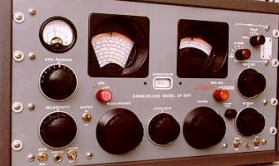
Made a lot of Q's on that antenna over the next couple of years. CW was my mode of choice although I had a lot of rag chews on SSB and as I went through puberty, the guys on the local weather net where I had a daily check in got a good laugh out of my changing voice. Homebrew projects involved a lot of active-filter projects for CW and later in 78, a build of an Accukeyer complete with external digital speed readout on a 7-segment LED display. Looked great... An early interest in RTTY about this time as well - using an old WE machine given to me by a friend of my dad's - the machine was huge and shook the pier-beam room supports when it was running. Home-brew demodulator of a pair of active filters and a center-neutral analog meter for tuning. Housed in a cardboard shoe box, of course. 

At the left, a scale model of my dream tower configuration - made from quite a few toothpicks. I got the idea one day to glue 3-4 toothpicks together - and noticed you could stack each set end on end and they would interlock in a sense making a pretty strong assembly. I can't remember what the antenna arrangement was but all were built up from ARRL antenna handbook formulas for the various beam types. It had red painted lights and looked very cool at night. In the background, at the apex of the house, you can see a bit of the Hy Gain Hy-Tower. A kindly gentlemen gave me the antenna when it blew down in a wind storm. At the time it was put up, I had no understanding of antennas and my dad decided the best location was to bolt it securely to the end of the house. Looked impressive but without a suitable ground system - it was not much of a performer. I had some free-standing verticals in the side yard with a good spread of radials and they worked much better by comparison. 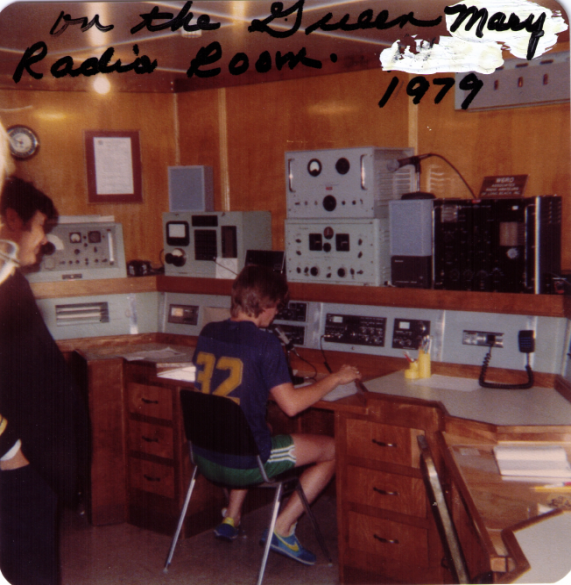
The photo (left) here shows operation on the Queen Mary. I had no idea there was a ham shack in operation but we saw it on the tour. The manager of that shack would not believe I had my license - but in those days I carried a copy in my wallet. Unfortunately, the wallet was in the car - and the Queen Mary parking lot is a huge space making it a long haul from the ship's radio room to the car. Upon return, they did let me have a turn at the mic. I thought it was ironic that there was no code key connected. 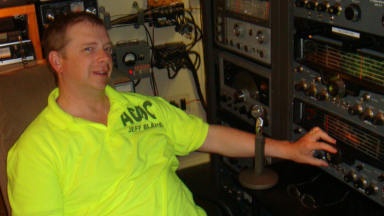 This shot, from about 2010, shows me setting in front of what may well be the most impressive rack of boat- anchor gear in existence. I was a guest of Thomas NE7X and the Central Arizona DX Club at the time. This shot, from about 2010, shows me setting in front of what may well be the most impressive rack of boat- anchor gear in existence. I was a guest of Thomas NE7X and the Central Arizona DX Club at the time.
It was great to get my hands back on some of the gear of my youth - including this mint condition SX-101 receiver. I remember having a QST advertisements stuck to the wall as a kid - showing the HT-32 and SX-101... 1978 - Kenwood TS-520 Stepping into the modern era, Elmer Larry Smith purchased a new Kenwood for the shack. I saved up money and later bought the 500 hz Collins mechanical filter and had real selectivity - just like the big boys! It's a great time at the AC0C shack. 
The 1981 picture above shows the TS-520 in the center, and then my version of the famous Accukeyer to the right. The other "color" was reflective of the point in life (high school). I was proud of the keyer - a modified design with double the memory slots as the Accukeyer had - a feat performed without logic but using diodes to provide an OR function. Above that is a speaker for the sidetone and a digital display which provided a direct WPM speed indication of the keyer - a feature I don't have in my "modern" 2010 shack. The keyer is a Bencher that I still use to this day. The microphone was used on a local net that I had participated in - but the op mode was 99.9% CW. Antenna experiments at that time were centered around the HF discone. I liked the idea of an omnidirectional antenna that required no radials and covered a lot of ham bands. The dimensions I recall were 12' (4m) for the disc, and 18' (6m) for the slant part of the cone. Construction was with "chicken wire" mesh of galvanized screen overlaid on top of an aluminum structure made from salvaged tent poles connected together and cut to form a octagonal base. The antenna had little mass and after assembly, it was tipped up and lifted onto the top of my parents house. Secured in 4 locations. Looked great! Unfortunately, an ice storm came to visit one day and the result was disaster. As I recreate the events, the dipole load, made much worse by the open wire feedline's already high mass, created huge pulling forces on the two end structures. At some point, the crows-nest arrangement (built from the tent poles of soft aluminum) collapsed. This put a huge final force on the i-beam top of the Hi-Tower causing one of it's support wires to break.. The I-beam bent over and hit the top of the ice laden discone. The securing features for the discone were overloaded causing the discone to break loose and slide off the top of the house and end up in the front yard. A total loss to all antennas. My dad joked many times about how I owed him a new roof but I don't think he suffered any new leaks from that storm. It was quite a mess to clean up and that was about the end of the ham work as new distractions like an eventual move off to college were very near. With the antennas gone, the rig was in storage as college came around. I needed money my first semester in college and sold the rig to the dorm manager. I can't remember what happened to the rest of the shack goodies. I think the HT-32 and SP-600 were sold but by then, they were hard to move because there was a lot of that kind of stuff setting on shelves at that point - idled by the new solid state gear now popular in the market. >>>>> AC0C was QRT from 1981-2008 <<<<< Shack History - The Modern Era - From 2008-Present... QRV Again after a long silence! - May 2008
OCT 2008 - SB200 & SB614 added to the lineup 
DEC 2008 - Added 2nd 28" LCD monitor and a new shelf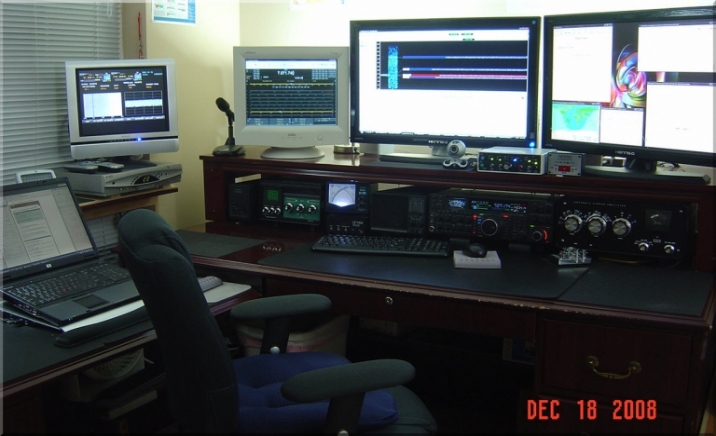
NOV 2009 - Added 3rd LCD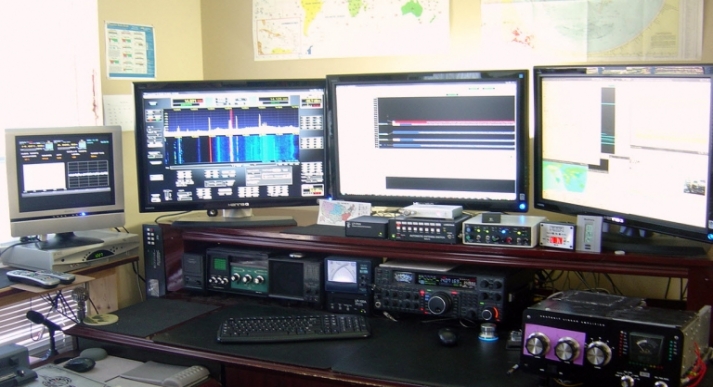
NOV 2010 - Lineup includes antenna array control head and Alpha 76PA added 
MAY 2011 - Added FTdx-5000MP and kicking off the So2r project For more information on the So2r project and the shack additions supporting that, click here 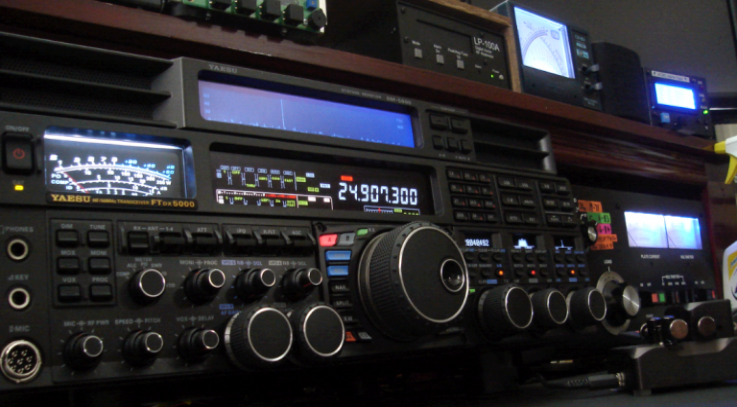
MAR 2012 - So2r Ready - YCCC So2r and Gen5 Attic Array Ready for Action!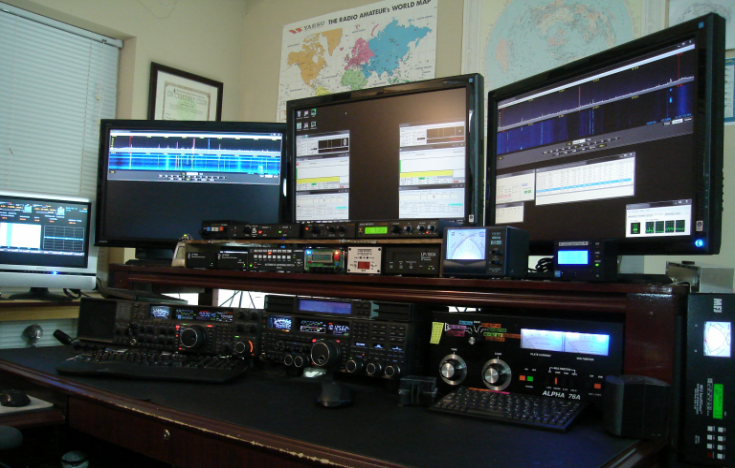
|